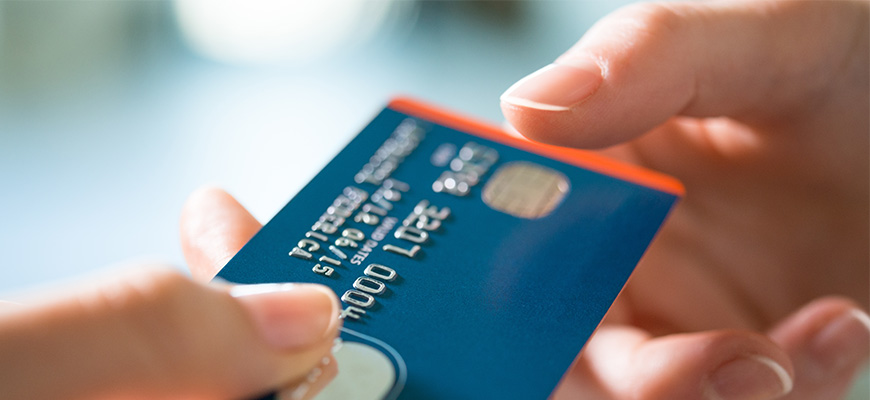Most secured credit card companies require you to deposit at least $200 with your application. The higher your deposit, the higher your credit limit and the more purchases you can make with your card.
Using a credit card is one of the most common ways to build credit. Unfortunately, it can be difficult to meet the requirements for a traditional, unsecured credit card when you are starting out with credit or trying to rebuild your credit score after a period of difficulty. This is especially true for Canadians who are 25 and under. This age group has the highest percentage of people with credit scores under 520. Scores below 560 are considered "poor."
Bad credit or a poor score can make it difficult to meet the application requirements for unsecured credit cards. Fortunately, secured credit cards offer an option to those who have trouble meeting typical credit card requirements. These types of cards require a security deposit, which means the card issuer is taking on less risk when issuing them. The minimum requirement will vary, however card issuers tend to ask for an amount within a certain range.
How Much Should I Put on a Secured Credit Card?
The answer will depend on your unique situation and the card issuer you decide to go with. $200 is a good place to start, because that is usually the minimum deposit required. You can work your way up to $1,000 or more.
When you first start using a secured credit card, it is important to know that your credit limit will be the same as your deposit. You will want to choose an amount that gives you some spending flexibility without putting yourself in financial jeopardy.
What Is a Security Deposit on a Secured Credit Card?
The security deposit on a secured credit card is the amount you initially deposit to the card issuer. In return, the company supplies you with a credit equal to the amount you deposited.
Unlike a debit card, you are not spending the deposited money; you are spending the credit allotted to you, so you will still incur credit payments, which will help you create a strong payment history and build your credit score.
Keep in mind your security deposit is the card issuer's safety net, not yours. If you fail to make your payments on time, the card issuer will use your security deposit to fulfill the unpaid charges, which will impact your credit score negatively.
Your payment history makes up 35% of your credit score, so it is extremely important that you pay the minimum due on time. Additionally, when you miss payments, you may be subject to late fees, increased interest and you might even risk losing your entire deposit and credit card account. If charges continue to go unpaid, your account could be turned over to a collection agency, which would be catastrophic for your credit score. To help keep your payments on track, you could set up reminders for yourself, or consider setting up autopay so you never miss a payment.
When Do You Place the Security Deposit to the Secured Credit Card?
Most of the time, you will need to make your deposit on the same day you submit your application. Some card issuers allow a deposit to be made within 35 days after approval. Security deposits can be accepted through a linked bank account or by cheque. Be mindful that missing the deposit deadline may cause your application to be declined.
Do You Get The Security Deposit Back?
There are two ways to get your security deposit back. The first is to close your account. As long as there is no outstanding balance, your money will be returned to you.
Another way to regain your deposit is by switching your account from a secured credit card to an unsecured card (if your card issuer offers this), but you must have a build a sufficient credit score before you’ll be able to make this switch. This is the preferable option of the two, as “graduating” the same card means you’ll be able to keep the credit history you’ve built up by using it.
If there is an outstanding balance for an extended period, the card issuer may choose to close your account, pay your debt with your security deposit and return any leftover funds.
How Much Should You Spend On a $200 Credit Limit?
In short, on a $200 credit limit, you should aim to carry a balance of no more than $58. This is because carrying a balance of less than 30% of the total credit you have available to you is great for your credit utilization ratio, which is a significant factor that determines your credit score.
Your credit utilization ratio is the amount of credit you use out of the total amount of credit available to you, combined across all your different credit accounts. To maintain or improve your score, you will want to keep your utilization rate above 0% and below 30%. This is a good range to stay in, because it shows that you can make your payments on time and that you do not overspend.
The math:
Amount of Credit Used / Total Credit = Utilization Rate
Calculating how much you can spend for optimal credit-earning:
Total Credit Available x 29%
Example: $200 x 0.29 = $58
Can I Put More Money on My Secured Credit Card?
Yes, you can put more money on your secured credit card. To put more money on your card, your current limit must be under the maximum amount allowed for your current credit score.
If you opened your account with a minimum amount, you can increase your credit limit with an additional deposit. If you are able to sustain payments for some time and your credit score has increased, you may be eligible for an increase on your maximum amount. Once your maximum limit has been raised, you can add more money.
Your credit limit will increase to the total amount put into the security deposit in both situations.
Will Increasing My Secured Credit Card Limit Help My Credit Score?
There are many ways to increase your credit score, and increasing your secured credit card limit is one strategy to build credit. This approach can be used by individuals or small businesses to decrease their credit utilization ratio.
However, this is only a good idea if you are financially stable, can trust yourself to keep making your payments on time and if you plan on keeping your spending below 30% of your new credit limit.
You should also consider that the money used for your security deposits will be tied up until you close or upgrade your account, so those funds are unavailable to you. Furthermore, small business owners who use this strategy will need to consider how secured credit cards affect their accounting, like retained earnings and cash flow calculations.
The Bottom Line
Secured credit cards are a great way for those with poor credit scores or no credit history to build their scores. You should start with a small security deposit of around $200. This gives you some credit to make purchases with, and with the proper budget, you can save this amount in a few months. Remember that many issuers expect this deposit with your application, so you must have your funds ready before you apply.
Once you develop a strong payment history, your score will increase enough to qualify for higher amounts of credit. You can decrease your credit utilization rate by raising your credit limit without increasing spending. Eventually, after making your payments on time and maintaining a good credit utilization ratio, you will likely qualify for a traditional, unsecured card. At this point, you can upgrade or close your account and have your deposit returned to you.











